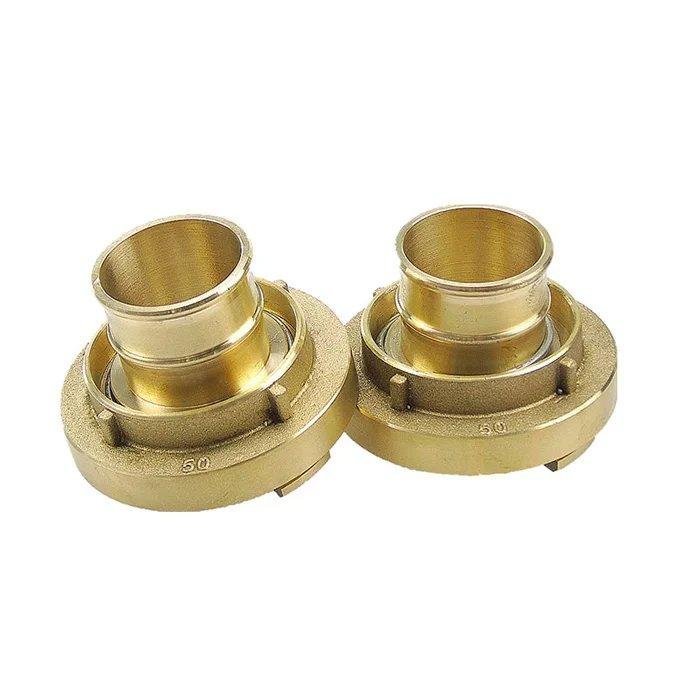Fire hose couplings play a crucial role in ensuring the safety and effectiveness of firefighting operations on ships. These durable and corrosion-resistant couplings facilitate the secure attachment of fire hoses, enabling the delivery of water or firefighting foam to combat flames effectively. In this blog post, Jingqi will take a closer look at the manufacturing process of brass marine fire hose couplings for sale, highlighting the various steps involved and the importance of precision and quality control.
Material Selection:
The first step in manufacturing brass marine fire hose couplings is selecting high-quality materials. Brass, primarily composed of copper and zinc, is the preferred material due to its excellent strength, corrosion resistance, and ability to withstand extreme temperatures. The precise ratio of copper to zinc is determined based on the desired properties of the coupling.
Casting:
To produce brass marine fire hose couplings, the chosen brass alloy is melted in large furnaces until it reaches its liquid form. The molten brass is then poured into pre-designed molds that shape the couplings. The molds are typically made from high-strength steel to withstand the high temperatures and pressures involved. Once the brass has cooled and solidified, the molds are opened, and the raw castings are removed.
Machining:
The next step involves machining the raw castings to achieve the desired dimensions and specifications. This process is carried out using technologically advanced CNC (Computer Numerical Control) machines, which ensure precision and consistency in the final product. The CNC machines are programmed with the exact measurements and specifications of the couplings, allowing for accurate shaping, drilling, and threading.

Threading:
Threading is a crucial step in the manufacturing process of brass marine fire hose couplings, as it enables easy and secure attachment of the couplings to the fire hoses. Depending on the specific requirements, threads can be cut directly into the couplings or can be created using threading dies. This ensures compatibility with a wide range of fire hoses available in the market.
Surface Treatment:
To enhance the durability and aesthetic appeal of brass marine fire hose couplings, surface treatment processes are employed. These may include polishing, buffing, or electroplating the couplings. Polishing and buffing remove any imperfections and blemishes, resulting in a smooth and visually appealing finish. Electroplating involves depositing a thin layer of another metal, such as nickel or chrome, onto the surface of the coupling, which provides additional protection against corrosion.
Quality Control:
Throughout the manufacturing process, strict quality control measures are implemented to ensure that the brass marine fire hose couplings meet the required safety and performance standards. This includes regular inspection of the raw materials, rigorous testing of the castings and machined components, and thorough checks of the finished couplings. Quality control checks encompass dimensional accuracy, thread integrity, pressure resistance, and surface finish.
Conclusion:
The manufacturing process of brass marine fire hose couplings involves a combination of precision casting, machining, threading, surface treatment, and stringent quality control. Each step is crucial to ensure that the final product meets the necessary strength, durability, and performance requirements. By using high-quality materials, employing advanced machining techniques, and adhering to rigorous quality control standards, manufacturers can produce brass marine fire hose couplings that are reliable, efficient, and capable of withstanding the demanding conditions encountered in firefighting operations at sea.
https://www.harry-fire.com/Manufacturing-process-of-brass-marine-fire-hose-coupling.html



